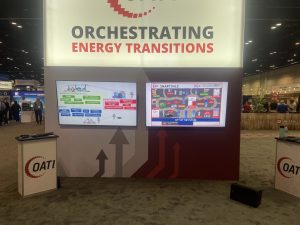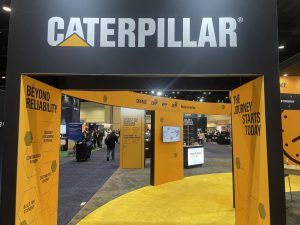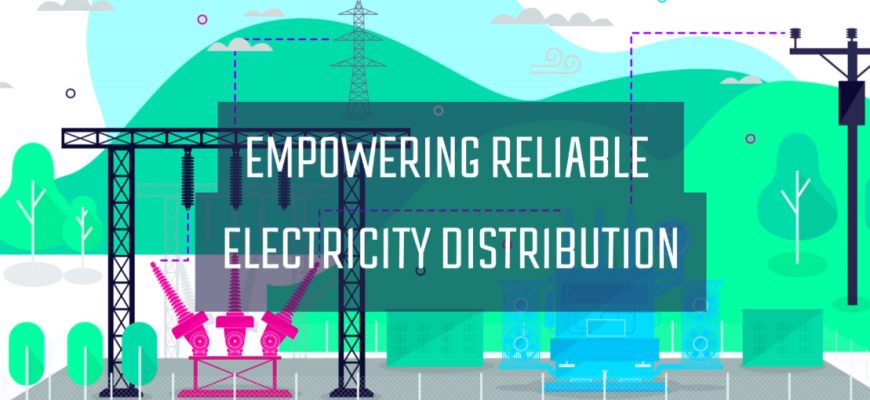- March 6, 2024
- by Julian White
Every year in February companies and utilities gather at Distributech to show off their latest products and services and discuss current trends in electricity distribution. It’s a classic tradeshow with big booths and lots of breakout sessions. And it’s a fun place to see what everyone is focused on selling these days. And while those new products are always interesting to learn about, it’s what they tell us about where the utility industry is headed that really gets my juices flowing.
This year, more than any in the past, the conversation was about better ways to service load growth. Some combination of smart meters, storage, distributed energy resources (DERs), distributed energy resource management systems (DERMS), virtual power plants (VPPs), grid digitization, automated outage mitigation, interconnection and EV charging were words being thrown around in seemingly every conversation. More and more, distribution utilities are coming to terms with electrification driving new load growth1 and the realities of servicing most of that new load with generation coming from wind & solar2.
The reason for this “coalescence about the future” amongst companies earning their livings making products and services for utilities is not hard to grasp. (1) Transportation and space heating are two of the major elements of our society rapidly shifting to electricity. Data centers, already growing at a good clip are now forecasted to jump with the introduction of new forms of AI. And industry electrification driven by decarbonization targets is just getting started. (2) Wind and solar costs have plunged, reflected in them having been the largest share of new generation being built for the last X years, with no change to that in sight.
This is exciting. These are major changes to the U.S. energy system, and they’re unfolding faster than most would have predicted just a few years ago. These shifts represent a new opportunity to build a more reliable grid. That’s because wind and solar will be deployed across both the transmission and distribution systems, cost effectively evolving the grid to be more flexible and more reliable by giving grid planners and operators more data and visibility into the grid’s operations. Everyone at Distributech seemed to get this, and the rise of DERMs and VPPs, perhaps more than any other product or service being sold, exemplifies it.

OATI had as big a booth as I’ve ever seen, all focused on orchestrating grids

Even companies like Caterpillar are offering DERMS & VPPs
What’s a DERMS? What’s a VPP?
To level set, DERMS are a combination of monitoring and control systems aimed at helping utilities integrate distributed energy resources (DERs) with operations at all levels for management and monitoring purposes3; VPPs are broadly defined as aggregations of DERs such as smart appliances, rooftop solar with batteries, EVs and chargers, and commercial and industrial loads that can balance electricity demand and supply and provide grid services like a traditional power plant4; To be clear, neither of these concepts are new. Utilities such as Dakota Electric Association (@) have operated demand response programs (a type of VPP) for 40 years, recognizing the cost reductions these programs can bring to their customers. And many of the same principles and practices required for DER management have been in use by transmission system operators since the beginnings of the electricity grid. But the benefits of deploying these technologies in conjunction with the build out of a grid with much higher wind & solar penetration is just now being understood.
Reliability, the Core Value of Every Utility, Requires DERMS & VPPSs at Scale
Cost is of course a key criteria in the decisions that utilities make, but it is not on its own, the most important. The core responsibility of a utility is to provide reliable electricity service to its customers. And it is reliability, more than any other factor, that is driving the rise of VPPs and DERMS. The confluence of factors now threatening reliability boils down primarily to increasing electricity demand5 and the slow pace of transmission development6. These two factors are now pointing to a future where we’re going to need a lot more electricity and at the same time it’s going to be harder than ever to deliver it from the bulk power system. Every day, the signs point more and more to this and I’m nowhere near the first person to make this case. In fact MISO, the transmission operator across the majority of Nokomis Energy’s service territory is now shouting this from the rooftops (see: Reliability Imperative7). If you agree with me, and perhaps more importantly MISO, that this moment is coming, then logically the next thought is, do we have the tools to solve this? Even if you assume that we are going to figure out how to build transmission significantly faster (a big if), you still need more tools with more flexibility and that’s where DERMS and VPPs show up.
Adding Load Flexibility to Our Toolbelts with DERMS & VPPs
The first new way we can respond to the coming reliability crunch is to deploy more generation right where we need it. That means siting power plants right at the loads. And that means building solar (and wind) on our homes, our businesses, our farms and throughout our communities. To achieve this, we’re going to add generation to every distribution system. And just like our transmission system, those networks are going to need to be operated in a way that historically they have not been. This is where DERMS comes in. Operating a network with large amounts of generation requires controls, communication and protection systems that are not widely deployed today. Smart meters are a part of this, and so are inverters, thermostats, breakers, CHP systems, EV chargers; the list goes on and on. In order to operate and orchestrate this ever more complex system, you need DERMS. Thus the proliferation of these systems at the biggest booths at Distributech.
The second way we can respond is to become much, MUCH more flexible with our electricity usage. Said another way, we can get much better at reducing and shifting our use of electricity to match the times when wind and solar are plentiful. To achieve this, we need to become excellent at orchestrating the distribution system. This is where the Virtual Power Plant comes in. VPPs can come in all flavors and sizes, but in essence they are aggregating many devices on the distribution system to react to an opportunity in the wholesale market to make money, reduce cost and/or respond to an emergency. VPPs benefit from the existence of a DERMS and the more sophisticated the DERMS, the more opportunities exist for VPPs. Today many of us participate in a VPP through our utility’s ability to manage our air conditioners on hot summer days. Imagine every other device in your home or business that could be similarly managed without you even noticing it, and thus helping to provide cheaper, more reliable electricity.
A VPP can be managed by the utility, the hardware supplier or a third party aggregator. Ultimately the VPP manager orchestrates the set of DERs to meet a need or respond to a price signal in the market. And we’re still very early in the process of using only the electricity we need and at the optimal times to use it. More than anything, this optimization of energy use is the sleeping giant of the energy transition–the fundamental paradigm shift for the electricity system that the markets haven’t quite figured out how to leverage yet. But make no mistake: it is coming, and the rise of DERMS and VPPs signals we’re moving toward a future where those technologies become major or even leading players in our system (more to come on this in a future post).
But what about Storage?! Doesn’t it solve all these problems without the need for DERMS and VPPs?
Yes, storage is a critical part of the solution. But when you’ve got a constrained transmission system, storage needs to be close to load–or at least on the distribution system. Storage is just one of the many devices a DERMS will manage and a VPP can call on.
Time to Deploy
We need to prepare our distribution grids to meet the needs of a 21st century energy system. Wind & solar will continue to get cheaper, but it’s the rapidly increasing need for more electricity coupled with the challenges of building enough transmission that is driving concerns about basic reliability and in turn the rise of DERMs and VPPs. That Distributech was rich with solution providers indicates that the industry is aware of this trend and is now starting to prioritize it. These tools will continue to be refined, but to meet the coming challenges we need to start working to add them to our tool belts now.
—
References
- Grid Strategies, The Era of Flat Power Demand is Over
- US EIA, Short Term Energy Outlook, February 2024, p. 10
- EPRI, Understanding DERMS
- DOE, Pathways to VPP Commercial Liftoff
- US EIA, Today in Energy, April 2023
- IEA, Average lead times to build new electricity grid assets in Europe and the United States, 2010-2021
- MISO Energy, Reliability Imperative
Nokomis Energy is a clean energy developer based in Minneapolis, Minnesota. Our mission is to identify opportunities to create clean, low-cost energy projects for the people, businesses and communities of the Upper Midwest. We work directly with our customers and partners to implement and build clean energy solutions that work for your specific needs.
Let’s work together! Contact us to discuss how your business or organization can make the most of the energy transition.

